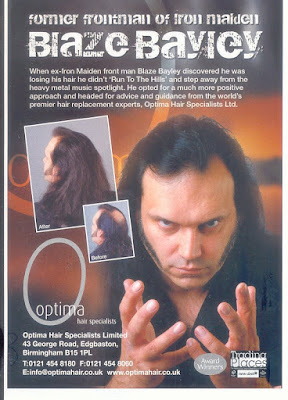 You won't see Fright Night, a semi-obscure, fun little vampire flick from 1986, on many "best of" horror movie lists. Nevertheless, it's one of my personal favorites. Fright Night packs into it all the elements I ask of a good horror film: A decent plot, some reasonable acting, a little mayhem, some monsters, a handful of nice visual effects, and a little bit of skin. On all these requirements, Fright Night delivers.
You won't see Fright Night, a semi-obscure, fun little vampire flick from 1986, on many "best of" horror movie lists. Nevertheless, it's one of my personal favorites. Fright Night packs into it all the elements I ask of a good horror film: A decent plot, some reasonable acting, a little mayhem, some monsters, a handful of nice visual effects, and a little bit of skin. On all these requirements, Fright Night delivers.You can tell that writer/director Tom Holland is a horror fan. The film is very much an homage to Hammer Horror, a UK-based series of classic monster films that ran from roughly the late 1950's to the early 1970's whose line included such memorable titles as Horror of Dracula and The Curse of Frankenstein. Fright Night is also a love-letter to the once-prevalent late-night horror celebrity-hosted movie shows such as Elvira Movie Macabre and Monstervision with Joe Bob Briggs. In fact, the movie derives its name from a fictional and self-referential B-horror television program.
The basic plot of Fright Night is as follows: Main character Charlie Brewster is up late watching Fright Night while making out with his girlfriend Amy (pretty much a perfect horror movie beginning). Glancing out his window, Charlie sees two men carrying a coffin into the basement of a vacant house next door. The next day, a stream of gorgeous prostitutes begin to show up at the house, followed shortly by evening news reports of a series of murders.
Charlie begins to spy on the going-on at the house, and late one night he sees his new neighbor, Jerry Dandrige, kissing a beautiful woman in the window. Dandridge leans in to kiss her neck and opens his mouth wide--to reveal a set of wicked fangs. He's just about to bite the woman when he looks up and sees Charlie watching, wide-eyed. Dandridge pulls down the shade to complete his feast.
Convinced Dandridge is a vampire and behind the string of murders, Charlie seeks out the services of Peter Vincent, Vampire Killer and host of Fright Night (and an obvious 1:1 correlation to Hammer Horror's Peter Cushing). Vincent has just been fired from Fright Night, which has fallen sharply in the ratings due to the public's current thirst for "psychotic ski masked killers." But Vincent, thinking that Charlie is just a crazy kid, refuses his appeal for help.
Desperate, Charlie decides to sneak next door and drive a stake into Dandridge's heart. Amy and Charlie's friend Ed Thompson (another horror fan appropriately nicknamed Evil), don't believe Charlie's claims that Dandridge is a vampire, but in order to stop him from committing murder they recruit Vincent to perform a phony "vampire testing" ceremony on Dandridge. "Just like in Orgy of the Dead!" says Evil. Dandridge drinks holy water (tap water) supplied by Vincent and passes the "test." But Vincent, exiting the house, notices in a handmirror that Dandridge casts no reflection. The action really picks up from there.
Some of my favorite elements from Fright Night include the following:
Chris Sarandon as Jerry Dandridge. Dandridge must have done some film study of the 1979 film Dracula when prepping for his role, as he reminds me of a funnier, more self-deprecating Frank Langella. Dandridge is not in the mold of a frightening Nosferatu, a-la Kurt Barlow from Stephen King's 'Salem's Lot. Rather, he's a handsome seducer and pours on the sex appeal to charm his way into his victim's lives.
Classic vampires--with a twist. Fright Night has all the standard vampire trappings I like: An aversion to crosses and holy water, sleeping in coffins, avoiding daylight, inhuman strength, shape-shifting ability, etc. I don't like stories that mess too much with the old tropes. But Fright Night makes subtle tweaks to the formula that work. For example, instead of a broken down, Gothic-style home or a haunted Transylvanian castle, Dandridge lives in a not too out of the ordinary home in the heart of a suburban neighborhood.
Roddy McDowall as Peter Vincent. McDowall is the best actor in the film and his transformation from a phony, self-absorbed small TV star to real-life heroic vampire killer is a joy to watch.
1980's nostalgia. Fright Night is very much a period piece and has all the trappings (the distinct clothes and hairstyles, even a cheesy nightclub with synthesizer music) that those who grew up the decade know and love.
Fright Night isn't without its flaws. One subplot in particular (Dandridge is drawn to Amy, Charlie's girlfriend, because she looks like a woman he used to love ages ago) is not at all developed and wholly unnecessary. But overall it's another film that, along with The Lair of the White Worm and An American Werewolf in London, treads the horror and humor line just perfectly. It's certainly given me great enjoyment over the years and has held up to multiple October viewings.














